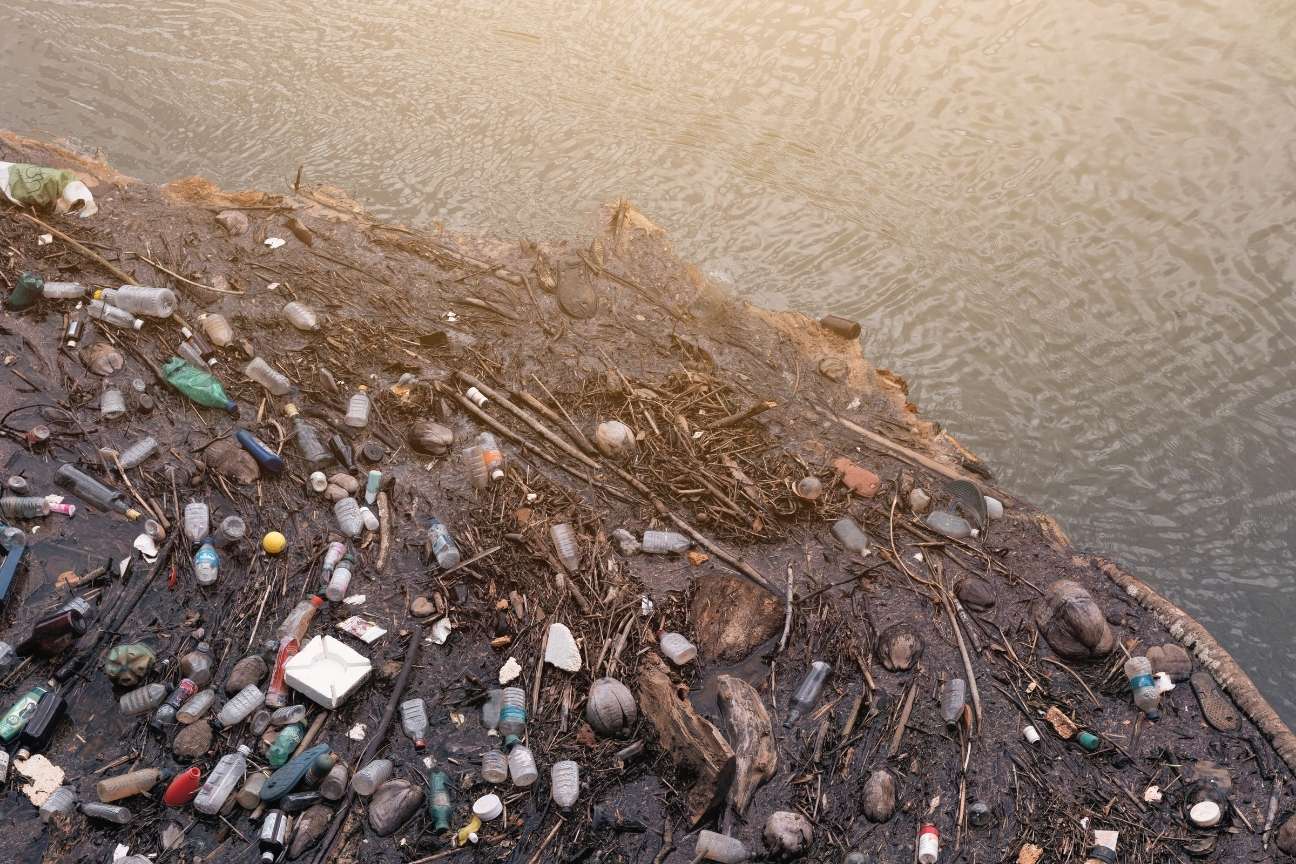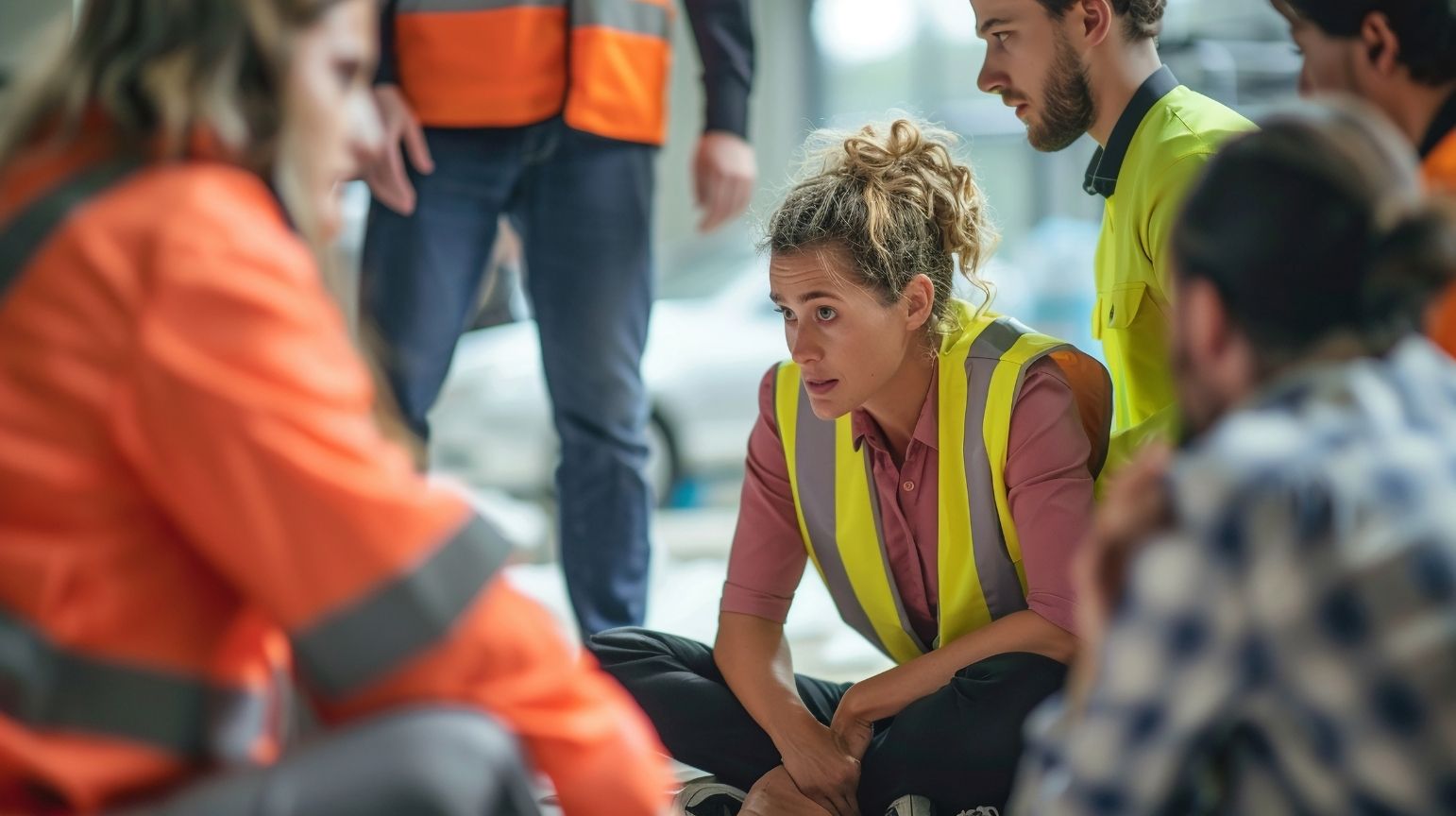Navigating the world of contaminated waste hauling can be daunting, especially with an ever-changing maze of regulations and safety standards to comply with. However, understanding and adhering to these guidelines can save time, resources, and potentially disastrous legal complications. This guide will cover seven essential regulatory compliance tips for effective contaminated waste management.
Introduction
Contaminated waste is any material that poses a risk to health or the environment due to its harmful components. This includes anything from medical waste to industrial byproducts. Proper management of contaminated waste is vital for public safety and environmental protection. If mishandled, it can lead to significant health hazards and ecological harm.
In the context of waste hauling, regulatory compliance is crucial. Regulations exist to ensure that businesses manage contaminated waste safely and responsibly. When haulers understand and follow these rules, they safeguard not only their own operations but also the community at large. Non-compliance can result in hefty fines, legal action, and damage to a company’s reputation.
By mastering compliance in contaminated waste hauling, you ensure that your operations are efficient and aligned with current environmental standards. This article will provide you with essential tips to navigate this complex landscape, so you can manage waste responsibly and avoid pitfalls along the way. Keeping up with regulations isn’t just important; it’s a responsibility that impacts everyone.
Tip 1: Understand Your Local and Federal Regulations
When it comes to contaminated waste hauling, knowledge is power. Understanding the regulations at local, state, and federal levels is essential. These regulations dictate how to handle, transport, and dispose of contaminated waste. Compliance isn’t just a legal obligation; it’s a matter of keeping the community safe.
Key Regulations to Know
At the federal level, the Environmental Protection Agency (EPA) plays a significant role. It establishes rules for hazardous waste under the Resource Conservation and Recovery Act (RCRA). These rules determine how to identify hazardous waste, manage it, and ensure safe disposal.
State regulations often mirror federal laws but can include additional requirements. For instance, some states mandate more stringent training for employees handling hazardous waste. Others may impose stricter limits on contaminants allowed in landfills.
Local regulations can vary widely, and they often reflect community concerns. City or county ordinances may include specific disposal methods or permit requirements for waste haulers. Ignoring these can lead to costly fines or even shutdowns.
Stay Updated on Changes
Regulations often change, influenced by new research or shifts in public policy. For example, recent developments in environmental science might lead to stricter definitions of hazardous substances. Stay informed through reliable resources, including state environmental agency websites and industry newsletters. Regularly attending workshops or conferences can also help you keep up with these changes.
Why This Matters
Staying current with regulations protects both your business and the environment. Non-compliance can lead to hefty fines, legal troubles, and damage to your reputation. Being proactive about understanding the rules ensures smoother operations and fosters trust with clients and regulators.
In short, grasping the complexities of local and federal regulations is a foundational step. It forms the backbone of effective contaminated waste hauling. Prioritize ongoing education to navigate this landscape confidently. Your commitment to compliance not only enhances your business but also contributes to a safer community.
Tip 2: Properly Classify Your Waste
Classifying contaminated waste is critical. Accurate classification ensures safe handling, transportation, and disposal of materials. Misclassification can lead to serious legal repercussions and environmental hazards.
The Classification Process
Start by assessing the nature of the waste. Is it solid, liquid, or gas? Next, determine its origin and chemical composition. Understanding these factors helps in classifying your waste correctly. You can categorize contaminated waste into several groups based on its characteristics and risks.
Hazardous vs Non-Hazardous Waste
Contaminated waste usually falls into two primary categories: hazardous and non-hazardous.
Hazardous Waste
Hazardous waste poses a significant risk to health and the environment. This type includes materials that are toxic, explosive, or flammable. Common examples include chemicals, batteries, or medical waste. With hazardous waste, you must follow strict regulations. This means proper labeling, storage, and disposal are vital.
Non-Hazardous Waste
Non-hazardous waste, while still requiring careful management, is less dangerous. This includes materials that are generally safe but may still need treatment. Examples are construction debris, certain types of industrial waste, or contaminated soil. Although less regulated, non-hazardous waste still requires proper handling.
Importance of Accurate Classification
Proper classification of contaminated waste not only protects the environment but also maintains compliance with regulations. Incorrectly identified waste can lead to illegal disposal and hefty fines. Therefore, always double-check classifications and seek expert advice if needed.
In summary, the classification process is a foundational step in managing contaminated waste. Identify whether your waste is hazardous or non-hazardous to ensure safe practices and regulatory compliance. By doing this, you can greatly reduce risks and enhance the efficiency of your waste hauling operations.
Tip 3: Keep Comprehensive Documentation
Keeping detailed documentation is vital in the contaminated waste hauling process. Proper record-keeping not only ensures compliance but also protects your operation from potential legal issues. Let’s break down why documentation matters and what you should include in your records.
Why Documentation Matters
Documentation serves as a clear trail of your waste management activities. It verifies that you followed all regulations and protocols. In the event of an inspection or an incident, having thorough records helps demonstrate compliance. This can save you from hefty fines and legal challenges.
Moreover, good documentation practices can improve operational efficiency. They provide insight into your waste management processes, allowing you to identify areas for improvement.
Essential Documents to Keep
To ensure compliance, you should maintain several key documents throughout the waste management process. Here are the most important:
Waste Manifests: These are vital for tracking hazardous waste from the point of origin to the disposal facility. They confirm that your waste is being handled and disposed of correctly.
Disposal Receipts: Keep copies of receipts from facilities where your waste is disposed of. This provides proof that waste is treated, recycled, or disposed of in compliance with regulations.
Compliance Reports: Regularly generate compliance reports to track your adherence to local, state, and federal regulations. These reports can also help you identify trends and areas needing attention.
Training Records: Document employee training sessions for handling contaminated waste. Ensure you retain records of who completed training and when they were trained.
Incident Reports: If any incidents occur during hauling, document them thoroughly. Include details about what happened, how it was resolved, and what steps will be taken to prevent future occurrences.
Organizing Your Documentation
Keeping your documents organized is just as important as generating them. Use a system that allows you to easily access records. Digital filing systems can enhance efficiency and reduce the risk of losing important documents. Regularly review and update these files to ensure you’re in compliance with any new regulations.
In conclusion, comprehensive documentation is a non-negotiable aspect of effective contaminated waste hauling. By maintaining clear records, you’ll safeguard your operation and contribute to environmental protection.
Tip 4: Choose Certified Waste Haulers
Selecting the right waste hauler is critical for maintaining compliance. Not all waste management companies follow the same standards. Therefore, it’s essential to choose certified waste haulers for your contaminated waste.
Criteria for Selection
Start by verifying licenses and certifications. Ensure they hold all necessary local, state, and federal licenses for handling contaminated waste. A reputable hauler will also have certifications in hazardous waste management. These can include credentials from the Environmental Protection Agency (EPA) and state environmental departments.
Next, research their reputation. Look for reviews and ask for references. A proven track record in managing contaminated waste safely indicates that the hauler commits to compliance and environmental protection. Additionally, consider their experience in your specific industry. Different types of contaminated waste may require unique handling techniques.
Benefits of Certified Haulers
Working with certified waste haulers offers multiple advantages. First, they are more likely to follow regulations diligently. This reduces the risk of legal issues for your business. Second, certified haulers often have better safety measures in place, protecting both your employees and the environment.
Moreover, experienced haulers come equipped with the right technology and equipment for safe transportation. They understand how to manage emergencies effectively, which provides peace of mind. Using reputable companies minimizes the risks associated with contaminated waste hauling.
In conclusion, choosing certified waste haulers should be a top priority. By investing time in research and selection, you ensure compliance and safety in your operations. Ultimately, this decision pays off by safeguarding your business and the environment.
Tip 5: Implement Safe Hauling Practices
When it comes to transporting contaminated waste, safety should always come first. Here are some best practices to ensure a secure hauling process.
Vehicle Maintenance
Regular vehicle inspections are crucial. Here’s what you should check before every trip:
- Leaks: Look for signs of fluid leaks to prevent spills.
- Brakes: Ensure braking systems are functioning properly.
- Essential Components: Check tire pressure, lights, and other critical systems.
A well-maintained vehicle minimizes the risk of spills or accidents. Additionally, keep vehicles equipped with emergency response kits. These should include:
- Absorbent materials
- Gloves
- Goggles
Having the right tools on hand can make a significant difference in handling unexpected situations.
Protective Gear for Drivers
Ensure that all drivers wear appropriate personal protective equipment (PPE). This may include:
- Gloves
- Respirators
- Protective suits
Make sure drivers are familiar with the necessary PPE for their specific tasks. This knowledge is vital for their safety.
Training and Protocols
Regularly train drivers on safe hauling practices. They should understand:
- How to drive safely
- How to handle waste securely
Create clear protocols for loading and unloading waste to prevent accidents. A structured approach can significantly enhance safety.
Emergency Procedures
Develop a comprehensive emergency response plan. This plan should outline the steps to take in case of a spill or other incidents. Key points include:
- Emergency contacts
- Spill containment procedures
- Cleanup processes
Ensure all employees are aware of this plan and conduct regular drills. Practicing these procedures can save lives and protect the environment.
Communication is Key
Maintain open lines of communication during transport. Drivers should have a reliable method to contact support teams. This ensures quick action if an issue arises, minimizing risks to health and the environment.
By focusing on these safe hauling practices, you’ll protect both your team and the environment. Implementing these measures not only enhances compliance but also promotes a culture of safety within your organization.
Employee Training and Safety Measures
Training your employees is non-negotiable in contaminated waste hauling. It ensures compliance with regulations and safeguards your team’s well-being. The right training programs empower workers to handle hazardous materials wisely and effectively.
Why Training Matters
First off, proper training instills a safety-first mindset. With the right knowledge, employees can:
- Identify risks,
- Understand protocols, and
- Reduce the likelihood of accidents.
This preparation ensures a swift response should incidents occur. Remember, even small mistakes can lead to serious consequences in waste management.
Areas of Focus in Training
Your training program should cover several key areas:
Regulatory Compliance:
Employees must grasp the laws governing hazardous waste handling. This knowledge helps keep your operations aligned with state and federal regulations.Safety Procedures:
Include clear safety protocols in your training. Regularly review procedures for:- Handling,
- Transporting, and
- Disposing of contaminated waste.
- Use of PPE:
Personal protective equipment (PPE) is vital for preventing exposure to hazardous substances. Provide detailed guidelines on when and how to use PPE properly.
Emergency Response Planning
Having a solid emergency response plan can save lives. Train employees on how to react in case of an incident—whether it’s a spill, leak, or exposure. Conduct drills regularly to ensure everyone knows their roles and responsibilities. This practice empowers your team to act efficiently in real emergencies.
Investing in Continuous Learning
Compliance and safety are not static concepts. Regulations change, and your training should adapt accordingly. Consider these strategies for continuous learning:
- Schedule regular updates and refresher courses to keep your team informed.
- Encourage participation in workshops and seminars.
This effort not only boosts knowledge but also enhances employee engagement and morale.
Final Thoughts on Employee Training
Investing time and resources in employee training pays off. A well-trained workforce minimizes risks and promotes a culture of safety. By focusing on compliance and best practices, you protect not only your employees but also the environment.
Embrace ongoing education and make safety a fundamental part of your company’s values.
Tip 7: Regular Compliance Audits
Conducting regular compliance audits is crucial in the contaminated waste hauling industry. These audits help ensure that your operations align with both local and federal regulations. They also identify any weaknesses in your processes, allowing you to fix issues before they escalate.
Why Conduct Audits?
Audits provide a clear overview of your compliance status. Regular assessments help you catch discrepancies in waste management practices. If left unchecked, these discrepancies can lead to fines or even shutdowns of your operations. Therefore, make audits a routine part of your compliance strategy.
How to Perform Effective Audits
Create a Checklist: Start with a comprehensive checklist that includes key regulations and safety practices. This will guide your audit process and ensure nothing gets overlooked.
Data Review: Compile and review all relevant documents, including manifests, transportation logs, and disposal receipts. Cross-check this information against your waste management policies.
Vehicle Inspection: Regularly inspect your fleet vehicles for compliance with safety standards. Ensure they are clean, well-maintained, and equipped with necessary safety equipment.
Employee Interviews: Talk to your team members about their roles in waste management. Gather feedback to assess their understanding of compliance protocols and identify areas for improvement.
Evaluate KPIs: Set key performance indicators (KPIs) to measure the effectiveness of your waste management practices. These can include metrics like the number of compliance incidents or response times to safety issues.
Implementing Audit Findings
Once you complete an audit, it’s time to act. Document findings and develop an action plan for necessary changes. Share your plan with your team to foster a culture of compliance. Moreover, consider scheduling follow-up audits to monitor progress.
By prioritizing regular compliance audits, you can safeguard your operations and contribute to effective contaminated waste management. Audits not only keep you compliant but also strengthen your business reputation. Embrace them as a vital tool for success in this critical industry.
Conclusion
Navigating the regulations surrounding contaminated waste hauling can feel overwhelming. However, by following the seven essential compliance tips discussed in this article, you can simplify the process and enhance your operational efficiency.
First, understand your local and federal regulations. Knowledge of the laws that affect your waste type ensures you’re compliant and mitigating potential risks. Second, always classify your waste correctly. Distinguishing between hazardous and non-hazardous waste is critical for proper handling and disposal.
Keeping comprehensive documentation is also vital. Accurate records not only help in audits but also foster accountability and transparency in your operations. Choosing certified waste haulers guarantees that you’re collaborating with experts who meet necessary safety and compliance standards.
Implement safe hauling practices to protect both your workers and the environment. Regular maintenance of vehicles and proper training for drivers play significant roles in this aspect. In addition, continuously training your employees on safety measures and compliance procedures keeps them informed and prepared for any situation.
Finally, conduct regular compliance audits. These evaluations help you identify gaps and improve practices over time. Use checklists and key performance indicators to streamline this process effectively.
By adhering to these guidelines, you will not only ensure safe and compliant operations but also promote a culture of responsibility within your organization. Ongoing education and vigilance regarding waste management regulations will further solidify your commitment to safety and compliance. In the end, these practices benefit not just your business but the broader community and environment.







